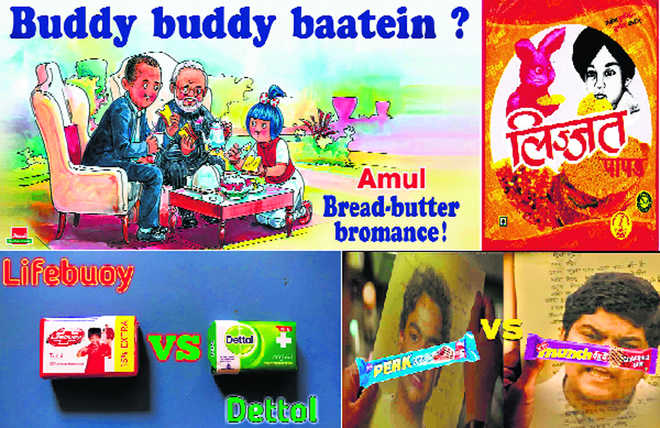
Bhanu Pande
Senior advertising professionals will tell you that this book left them with a deep sense nostalgia. Journey of Indian advertising and brand communication, chronicled in the book, its evolution shaped by social changes and times leading to the present, makes for an interesting read, especially since it’s been dished out in a quirky and humorous style.
The book touches upon almost all facets of Indian advertising with fair amount of success. A liberal dose of advertising and marketing case studies to bring out the roller-coaster ride of the Indian advertising, means a good chance that Stark Raving Ad will go down well with the marketing pros, students of brand communication and marketing.
Controversies and traditional rivalries in brand communication have been given a graphic treatment to bring forth the ideas behind each communication. Iconic brand wars — Horlicks versus Complan, Dettol versus Lifebuoy, Cadbury Perk versus Nestle Munch (Cola war is however, conspicuous by its absence) — give a sense of the pressures advertising and creative professionals go through from the clients’ side.
Whether the brands thrown up by social movements such as cooperatives that used advertising in their own inimitable way — Amul girl and buck-toothed rabbit of Lizzat Papad — or efforts to change consumer behaviour as in the case of one-time-use sachet idea (Chik shampoo), the book keeps the tempo intact. The guiding principles of advertising are nicely depicted through cases and anecdotes.
Many success stories, ideas with humble beginning and the way advertising shaped their future gives a good feel about the sagacity of Indian advertising and marketing fraternity. Even MNCs with all their rigidity and our-brands-are-sacrosanct attitude have had to yield to the vagaries of Indian consumers and adapt. And let advertising play with their brands. McDonald’s and Domino’s among many others, understood this well in time.
Changing profiles of the target audience, their shifting power dynamics for advertisers is well assayed and points to the author’s perspicacity and sharp insights. After all, Ritu Singh, the author, has been on both sides of the table in her career — client (TOI) and the agency (JWT).
Indian advertising has been quick in its response to the changing market and consumer behaviour. When consumers demanded traditional brand experience in modern trappings, it worked hard. Now with multiple available platform for marketing and brand communication including digital, advertising has sharply invaded Indians’ life.The book has tried to capture the emerging scenario where people are consuming communication differently.
Creating a communication today is much more challenging with the fluid digital medium. That makes catching consumer attention a big deal, hence building iconic brand story, unlike in the past. Digital advertising comes as a book-ender despite that fact it’s most critical today, but to be fair to the writer, the format didn’t allow a liberty there.
While focus of the book is advertising, in doing so, it highlights scores of marketing manoeuvres which makes it all the more exciting. Singh has been extensive and in-depth in her research to bring out the best of Indian advertising. A racy and chatty writing style makes it easy to navigate through the book quickly, even for a slow reader.
Advertising and marketing professionals of the modern era may not know what it was like to live in the past — no matter how much research they do — so the success of this book largely depends on creating a convincing picture of brand communication challenges of that era and how desired results were achieved. The author rises to this challenge with great skill, building great atmospherics in every theme and chapter.
Over all, the book makes for an interesting leisure read, but students and young marketing professionals would do well to have a copy on their shelves.



























